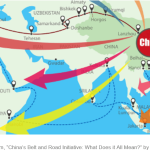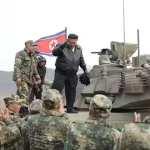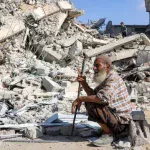North Korea’s state media reports that the nation will build a third 5,000‑ton Choe Hyon‑class destroyer at the Nampho Shipyard, with a completion target of October 10, 2026 coinciding with the founding anniversary of the Workers’ Party.
The announcement follows the launch of the first destroyer, the Choe Hyon, in April and the botched but later rectified—launch of the second vessel, Kang Kon, in June.
The rally held by shipyard workers and officials emphasized urgency, pledging unwavering effort to bolster North Korea’s “maritime sovereignty” and “defend national interests” Supreme Leader Kim Jong Un has for months emphasized accelerating naval expansion to deter perceived threats from the United States and its regional allies.
Despite this ambition, analysts remain skeptical about Pyongyang’s actual ability to field a combat-ready blue-water navy

The Kang Kon initially capsized during its launch an error blamed by Kim on a “criminal act” but it was successfully re-floated and relaunched.
External experts note that key systems may have sustained water damage, raising questions about the vessel’s operational readiness.
The Choe Hyon class is North Korea’s first attempt at large, multi-role warships. Designed with phased-array radars, vertical launch systems for guided missiles, and nuclear-capable delivery options, the vessels signal a push toward greater naval deterrence.
Still, few independent assessments confirm whether these systems are fully functional or merely symbolic.
Amid renewed cooperation with Russia possibly in technology transfer the buildup accentuates growing military ties between Pyongyang and Moscow.
This trajectory comes in parallel with South Korea’s newly elected government, which is signaling a softer approach, halting loudspeaker propaganda and favoring diplomatic engagement.

Why It Matters
North Korea’s move to add a third destroyer reflects its ambition to evolve from coastal defense to regional naval presence. Yet technical limitations, repeated mishaps, and sanctions challenge its capacity to sustain such an advanced fleet.
For regional security watchers, progress on the third destroyer and any cooperation with Russia will be pivotal in assessing whether Pyongyang’s naval forces can shift from bluff to blue-water reality.
Source: DW News











